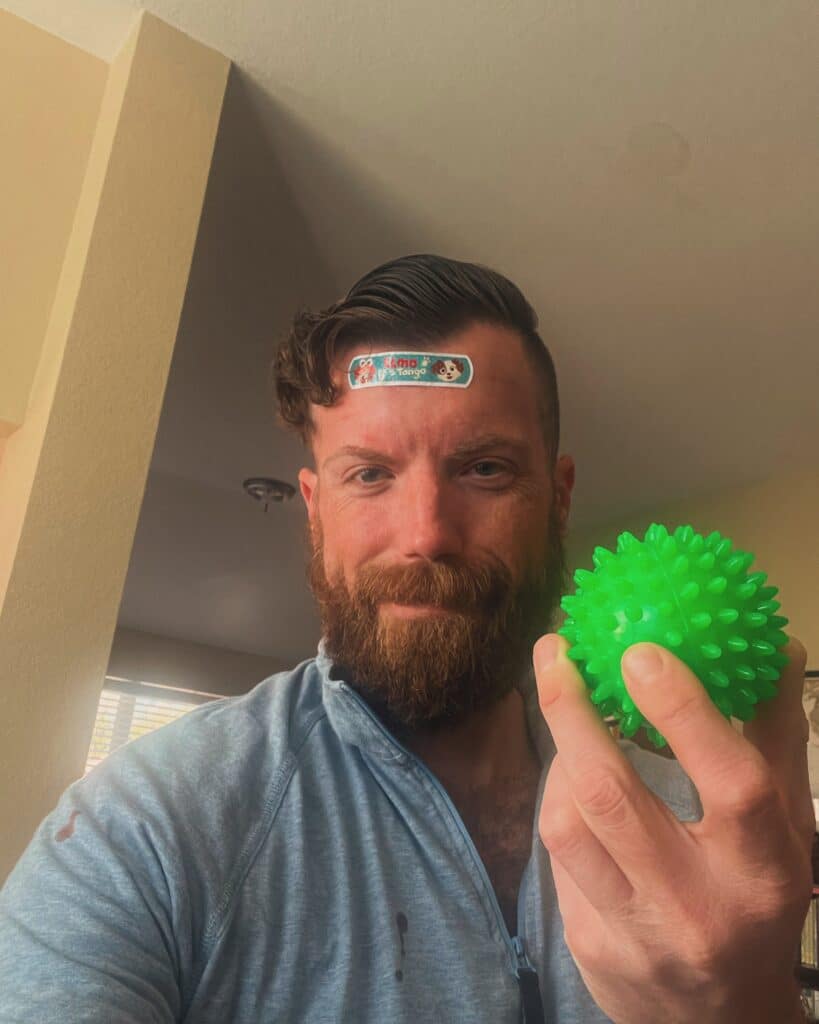I was assaulted! I mean, not really. I was sitting on my couch, and my toddler had a ball in her hand. I had never seen this ball before. It was green, kind of pointy. I told her let’s play catch and throw it to daddy. Jubilee, who has a surprisingly good arm for a two-year-old, doesn’t pass up the opportunity to play with me reared back and threw. She was only standing two feet away. Her aim was true. Straight at my forehead. Little did I know before I asked her to throw, this was not a soft plastic ball. This ball was a hard, green missile. I was hit and blood started flowing from my forehead from three separate puncture wounds.
Now, I know I wasn’t assaulted. Because first, I consented to her throwing the ball at me. Consent is a valid defense in many assaultive crimes[1]. And second, a two-year-old can’t commit assault. Criminal responsibility doesn’t start until the age of ten in Texas[2].
What the incident did get me thinking about was bodily injury. Bodily injury is something that must be proven in a class A assault case.[3] It was one of the main elements and usually the one that is in dispute. What does the penal code say about bodily injury.
“Bodily injury” means physical pain, illness, or any impairment of physical condition.[4]
If you take what happen to me yesterday, was it bodily injury? The answer to that is – yes. I am an enlightened enough man to admit that I was in pain when the ball struck my head. And when, the adrenaline wore off, the throbbing in my head was painful enough to need some medicine. I also suffered an impairment of physical condition. My beautiful face now has four unsightly marks on it.
In most assault cases that I have defended, the bodily injury is not quite as prominent as three bloody marks on a person’s forehead. There is routinely much less evidence pointing to bodily injury. These cases are typically he said/she said pointing of the finger.
Thankfully my wounds will heal, and I come out with a good story to tell in the future.


